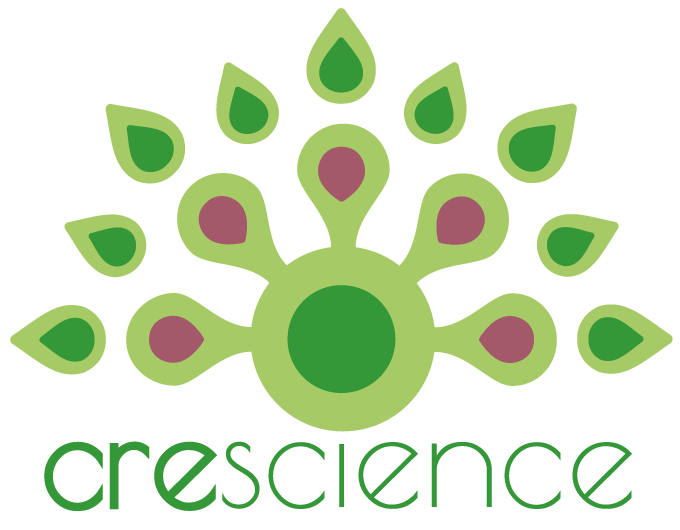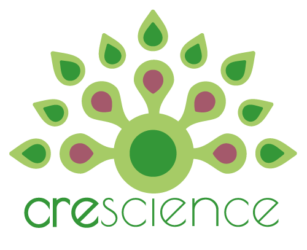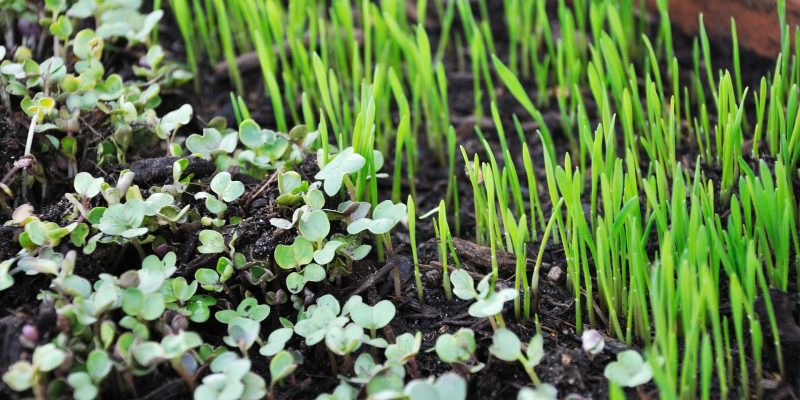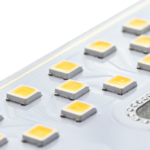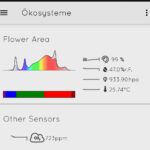For many decades the good old cress has been a niche product. Used here and there as a garnish, it has never been able to establish itself everywhere. Now the sprouts are getting competition - the microgreens are here! Larger and stronger than the sprouts, but the principle remains the same: unripe harvested vegetables and herbs, so to speak.
What are microgreens?
But what are microgreens actually? As already mentioned above, they are basically sprouts of various vegetables and herbs. Young vegetables would perhaps be a more appropriate term, as some varieties are allowed to grow for several weeks until they are harvested. Especially popular are broccoli, mustard seeds, rocket, coriander, etc. The majority of vegetables can be harvested as microgreen. Only nightshade plants such as tomatoes or aubergines should be avoided - these are extremely incompatible if harvested young.
Use of microgreens
Recently, many have been longing for a healthy, balanced lifestyle. This is part of the current trend towards self-optimization and is also reflected in nutrition. Organic and regional food stores are booming. So it is no wonder that microgreens rich in vitamins and antioxidants are well received.

We are increasingly finding the small leafy vegetables on supermarket shelves, but the trend started in California's top restaurants. Already in the 80s of the last century, chefs in America started to integrate the up to 15 cm long microgreens into their menu. Today, the trend to use the young vegetables has long since sloshed across the Atlantic. As a tasty garnish, microgreens adorn numerous dishes. Salads and smoothies with the vegetables are also popular.
Advantages of Microgreens
Nutrient content
Across the different varieties, microgreens have a significantly higher concentration of nutrients. On average, the vitamin content of vegetables harvested young is five times higher than that of the adult varieties. We have found data on nutrient contents and harvest times of many popular microgreens.
Growing at home
If you want to grow microgreens yourself, you don't need much equipment. At home you can "upcycle" all kinds of plastic containers, such as the salad bowls from the supermarket. They already have integrated drainage holes and only need to be equipped with a substrate and seeds. Besides soil, various hydroponic substrates can be used as substrates.
In contrast, light is not necessary for all microgreens, some can grow in the dark until harvest. Nevertheless, photosynthetic activity in plants usually has a positive effect on the taste and many secondary plant substances can only be produced effectively with artificial lighting. We recommend our article on light spectra.
In the future we will deal with different possibilities of growing microgreens and publish a small guide.
Short growth period
Usually microgreens need only two to four weeks from germination to harvest. This plays into the hands of most home gardeners who do not want to wait a whole season for the fruits of their labour. This means that the first feelings of success are very quickly achieved. Here we have collected some popular varieties and their key data. An (almost complete) overview is provided by this English blog post on Microveggy.com.
Popular Microgreens
- Arugula: Harvest 7-10 days after germination, pungent nutty taste, lots of vitamin C, beta carontin, phenols, potassium, calcium
- Basil: Harvest 10-13 days after germination, slightly sweetish pungent taste, rich in vitamins A, C and K and minerals
- Radish: Harvest 8-10 days after germination, peppery taste, rich in vitamins A, C, K and E, beta carontin, lutein, ...
- Carrot: harvest 8-14 days after germination, mildly earthy, vegetable taste
- Celery: harvest 13-16 days after germination, celery taste already slightly present, very unique taste
- Chives: Harvest 14-24 days after germination, garlic-like, mildly pungent taste, vitamins A, B, C, E and many minerals
- Broccoli: harvest 7-10 days after germination, mild, slightly bitter, strong texture, rich in vitamins A, C, K and proteins
- Mustard: Harvest 7-10 days after germination, sweetish hot taste, lots of vitamin E, C and C as well as numerous carontenes and other ingredients
- Parsley: harvest 18-30 days after germination, mild parsley taste, refreshing
- Fennel: harvest 10-14 days after germination, mildly liqueurish taste, sweetish
- Coriander: Harvest 14-18 days after germination, strong citrus taste, celery like, vitamins A, C, K, calcium, iron and many more.
- Mint: harvest 10-14 days after germination, sweetish hot mint taste
- Dill: harvest 12-15 days after germination, typical dill taste, mild, vitamins A, B, C, E and K, proteins and many minerals
- Spinach: harvest 10-14 days after germination, mild spinach taste
- Turnip: harvest 8-12 days after germination, earthy-sweet taste, vitamins C, E and K, beta-carotene, lutein
- Mizuna: harvest 8-14 days after germination, piquant, peppery taste
- Tatsoi: Harvest 8-12 days after germination, mild mustard-like taste, contains vitamins A, B, C and E, as well as potassium and magnesium
- Amaranth: Harvest 8-10 days after germination, earthy taste, lots of vitamin K and C
- Swiss chard: harvest 8-10 days after germination, earthy-sweet taste
and much more.
Plant lighting to increase quality
Microgreens are primarily intended to improve the taste of other foods while providing important vitamins. The popular varieties stand out in terms of their aroma and taste thanks to their high content of secondary plant substances - such as rosemary acid, which produces a pungent taste. In order to maintain the secondary plant substances at the desired levels, certain Light spectra can be used to stimulate their production. In the case of rosemary acid, short-wave blue light is helpful for this purpose. With LEDs, these wavelengths can be used specifically to enhance or even change aromas. However, one must be careful that the light treatment also has the desired effect. Corn sprouts, for example, taste sweetish when grown in darkness, but a rather bitter taste can develop under the influence of light.
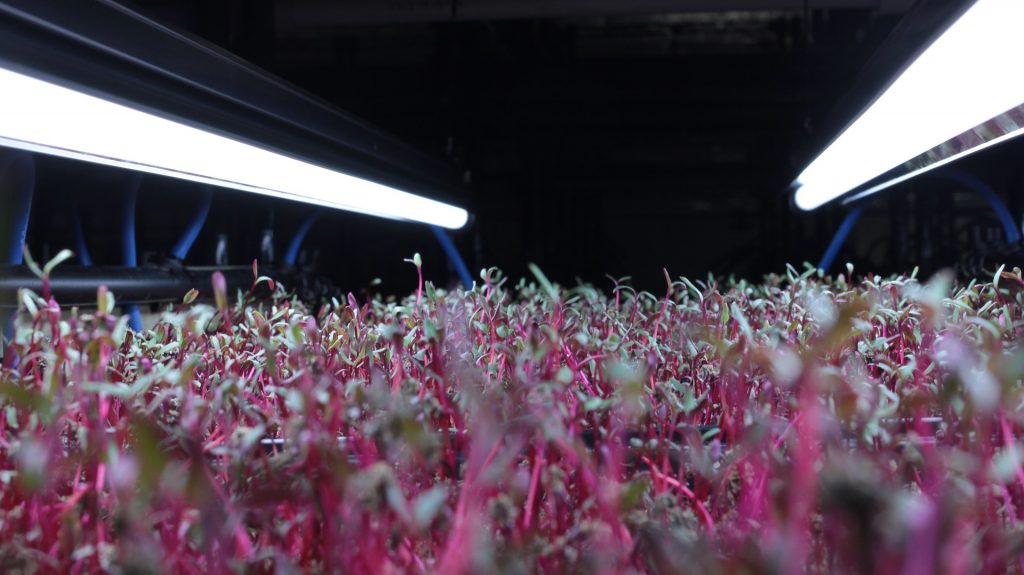
So if you want to gain control over the taste, you should rely on plant lighting with adjustable light spectra.
Near infrared radiation has another advantage. In scientific studies, it has been shown to significantly increase the germination rate of some varieties. Plant lighting with infrared light can therefore help to conjure up a dense microgreen jungle on the plant tray.
CRESCIENCE has developed LED plant lamps with adjustable light spectrum to meet the flexible requirements of growing microgreens and herbs.
